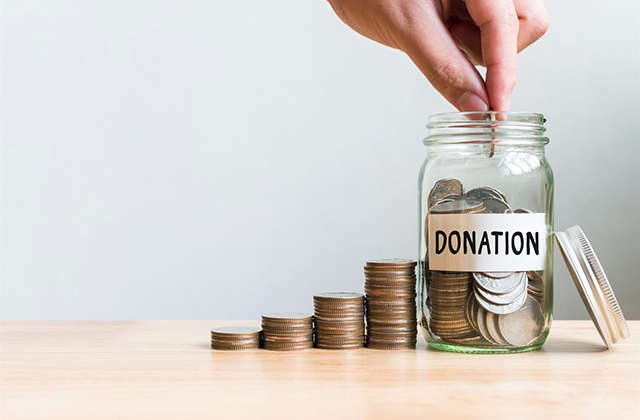By donating to charity your help means a lot for those in need and to the foundation. If you’re looking for a cost-effective and efficient way to ask for donations from your donors and prospects, look no further than your email! Sending donation appeals through email allows you to send numerous asks out with the click of a button, and it’s also a great way for you to update donors and prospects about your current and future projects.
While you may already be sending out emails to talk to your supporters, everyone can always use some extra advice when it comes to making donation appeals using email.
Because of the nature of email, many of these strategies will differ from, say, the tactics you would implement to ask for a donation face-to-face. However, there will be some overlap between these best practices and others.
Take a look at these top six strategies for asking for donations with emails.
1. Create eye-catching subject lines
Most people receive a multitude of emails every day. Some are important and are stored in their inbox, while others are marked as spam and go to the trash folder, never to see the light of day again.
Where are your nonprofit’s emails going?
While you can’t physically prevent your email recipients from moving your emails to their trash folders, you can decrease the chances that they will do so with an eye-catching subject line.
Instead of vague, boring headlines that don’t explain what the email is about, be direct with your email recipients. If you want them to donate, tell them so.
An example of a not-so-great email subject line would be:
“Do you like puppies?”
This sentence doesn’t communicate anything to the reader and says nothing about the organization. Instead, try something along the lines of:
“Donate now to [your organization name] to help puppies and kittens find homes.”
This subject line tells the recipient exactly what is being asked of them and explains what the money will go toward. It also includes the name of the nonprofit as an additional detail.
While you should be sending out more than donation appeal emails to your donors, when you do make those appeals, pay attention to your subject lines.
If you don’t, your recipients won’t either.
Likewise, if you’re sending a stewardship email, make it clear in the subject line! If recent donors see an email from your nonprofit, you don’t want them to assume that you’re already asking for another gift. Leave no doubt!
2. Don’t wait to ask
When making in-person appeals, slow and steady wins the race, but when you ask for donations via email, you have to get straight to the point.
Make your ask within the first two paragraphs – the earlier the better!
You don’t want recipients to read your email and wonder what the point is. If you beat around the bush and don’t get to the ask until the last paragraph, many of your readers will have already tuned you out and moved on to the next message in their inbox.
Take a look at our example email template to see how it’s done!
This email gives donors clear action items right off the bat. Donors immediately understand that they’re being invited to a fundraising event and asked to contribute financially. With a little branding, a template like this one can be the perfect medium to express your nonprofit’s cause.
Make sure that your appeal is easy to see. Make it bold. Make the font larger. Keep the email aesthetically appealing, but make a point to highlight the ask itself.
By heeding this advice, your nonprofit can incorporate asking for donations over email into your larger online fundraising strategy!
3. Explain and describe
For those who are new to your organization, you’ll need to include more information about:
- The work that you do.
- Who you serve.
- What specific projects or initiatives their donations will go toward.
- Any other relevant insights.
Keep in mind that, at its core, your appeal email is an appeal. Any extra information should serve as support for that purpose. In your email, you can even include what specific donation amounts will fund, like the example below:
For instance, include information about the new project that your organization is attempting to complete, but add that you still need “X” amount to bring it to fruition.
Donors don’t need a background history of your nonprofit at this moment. Get to the point and only include information that is going to encourage recipients to give to your cause.
4. Keep it personal
It can be easy to slip into blanket statements and generalities whenever you ask for donations via email.
It’s crucial to remember, though, that your donors are all individuals and should be treated as such.
One way you can personalize your email communications to donors is to segment your email lists. For instance, a donor who has given to your organization repeatedly over the months and years should receive a different email than someone who just started volunteering with you. Segmenting inactive donors can help nonprofits maintain high open rates. Your segmented lists might look like the following:
By segmenting your email recipients into different demographics, you will be able to better personalize your correspondence and increase the chances that individuals will click through to donate. Segmenting your emails lists by topic allows your organization to target donors with relevant interests just as the example image below segments visitors based on the article topic they’re interested in:
5. Provide links and ways to give
Your donors won’t be able to, well, donate if you don’t give them the means to do so somewhere within the body of the email.
Depending on how your email is structured, this could take a variety of forms:
- A link anchored in the body of the email that leads recipients to the donation form on your website.
- A “Donate Now” button placed somewhere highly visible within the body. Get inspiration from Qgiv’s “See How Qgiv Works for You” button below:
- A link to your Facebook page’s donation form (if applicable).
- An address that they can send a check to.
- A number they can call to make a donation over the phone.
Additionally, you can provide links for donors who are looking for other routes to give by directing them to your “Ways to Give” page or to more general information about donating.
The more ways you have for donors to get to your donation page, the better off you’ll be.
6. Follow up and say thank you
Arguably, one of the most important components of asking for donations is saying thank you once you’ve received them.
Showing gratitude for donations of any size demonstrates that your organization is interested in donors, not just what is in their wallets.
People like to know that their contributions are appreciated, and your nonprofit can express that appreciation in a number of ways:
- Sending a follow up thank you email after a donation has been made.
- Sending a tangible thank you card.
- Highlighting one or several of your donors on your Facebook page or other social media platform.
- Inviting donors to special events based on their donation amount.
- Keeping them in the loop with your organization’s new via email.
Following up and thanking donors for their contributions helps ensure that your organization will receive donations in the future. The closer your relationship is with your supporters, the more likely it is that they will continue to give.
As a general rule, you should be using email to do more than just ask for money.
Email is a cost-effective way to stay in touch with donors and keep them updated on your current and future projects as well as any other pertinent happenings in your organization. When you incorporate donation appeals with other kinds of emails, your requests for funds won’t seem random and forced and will potentially result in more donations down the line.



